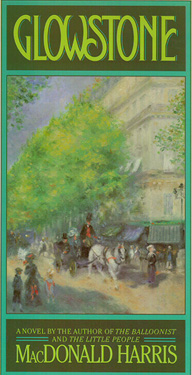

The time is 1906. Claire Savarin-Decker, a Belgian-American woman, is widowed when her scientist husband, Paul, is killed in a street accident. A true keeper of the flame, Claire dedicates herself to the task of carrying on their work with glowstone, the element the two of them have discovered. When Blanco White, a wealthy Colorado rancher who is an art collector, music lover, and bon vivant, comes into her life, she is torn between the cult of her dead husband and the "fierce desirability of the world" that Blanco represents. Meanwhile her young daughter, Hermine, is conducting her own experiments in the rich laboratory of life.
The objects of the novel, fetishes around which Harris wraps his tale, are bicycles, spectroscopes, magic lanterns, Edwardian toilets, Kodaks, horse cabs, stolen love-letters, dueling pistols, a 1908 Panhard touring car. The minor characters--the scientist Lancelot, the amorous Carlo, the painter Monet, the dancer Zoe Brooking--combine both the real and the imaginary. But the story is that of Claire's destiny, a destiny that in the end she passes on to Hermine, a figure almost of our generation who survives to lay the novel in our hands under the most threatening of circumstances.